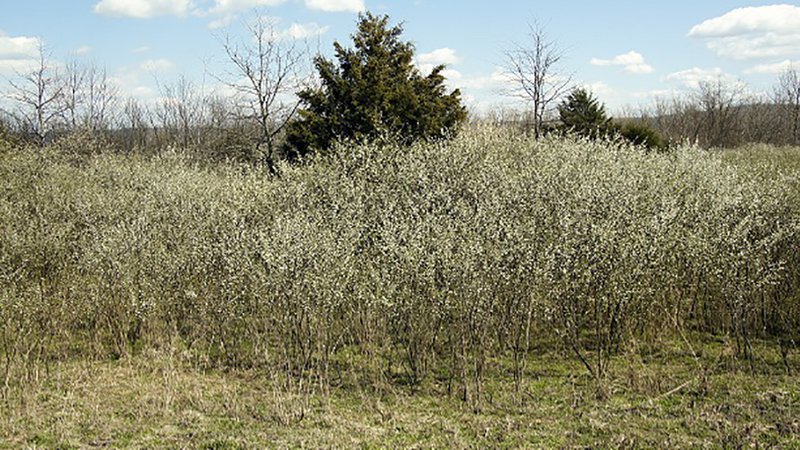Plum thickets add cover for ground-nesting birds, rabbits and deer
BY David Graves
ON 04-24-2019

April 24, 2019
David Graves
Private Lands Biologist, Brinkley Office
Every year wildlife biologists are asked what things landowners can plant to increase habitat on their property for quail, turkeys, deer and other wildlife. In truth, one of the best species to provide essential habitat may already be on the property, it just needs to be managed. Wild plum species, such as Chickasaw plum and American plum not only provide soft-mast for wildlife, but also grow in dense thickets many prey species, such as quail, turkey and rabbits, need.
Northern bobwhite use these thickets as “covey headquarters.” Covey headquarters are patches of escape cover with dense, shrubby canopy cover and little ground-level vegetation. Headquarters are used by quail on a daily basis to provide protection against severe weather and predators. Turkeys and rabbits also use these dense areas as escape cover to evade predators. White-tailed deer have been seen using these dense shrubby locations as bedding areas for their fawns. These thickets also provide ideal locations for ground- and low-canopy nesting songbirds. During the wild plum flowering season, these locations can provide great benefits to pollinator species as well.
For quail, up to 20 percent of the landscape should be reserved as some sort of escape cover or covey headquarters, with the remainder set aside for the other habitat types. Headquarters should not be more than 150 ft. apart, which will allow the quail to have quick access to their escape cover if the need arises. A properly managed plum thicket will provide that dense canopy cover and open ground cover which defines a headquarters.
Existing plum thickets can be improved to better benefit wildlife. If invasive grass species have taken over the ground-level cover, those grasses should be treated with a herbicide in the fall after the plum trees have gone dormant. This will re-open that ground-level cover making it easier for quail to move throughout the headquarters. Also, any overhanging or adjacent trees to the plum thicket should be removed from the area. This will reduce predation from overhead predators and provide a clear flight path for quail to escape from ground predators.
If plum thickets do not occur naturally on your land, they can be established by planting seeds or container-grown trees throughout open fields. Clear existing vegetation before planting your thicket to promote the growth of your plums and open the ground-level cover to facilitate turkey poult and quail movement throughout the cover.
For more information on improving your land for wildlife contact an AGFC private lands biologist at: Eureka Springs, 866-253-2506; Calico Rock, 877-297-4331; Jonesboro, 877-972-5438; Fort Smith, 877-478-1043; Mayflower, 877-470-3650; Batesville, 870-569-8124; Brinkley, 877-734-4581; Perrytown, 877-777-5580, Monticello; 877-367-3553, or Little Rock, 501-539-0889.
Check out our webpage for more info at www.agfc.com/habitat.
Recent News
Subscribe to Our Weekly Newsletter E-mails
Don’t miss another issue. Sign up now to receive the AGFC Wildlife Weekly Newsletter in your mailbox every Wednesday afternoon (Waterfowl Reports are published weekly during waterfowl season and periodically outside the season). Fishing Reports arrive on Thursdays. Fill in the following fields and hit submit. Thanks, and welcome!


